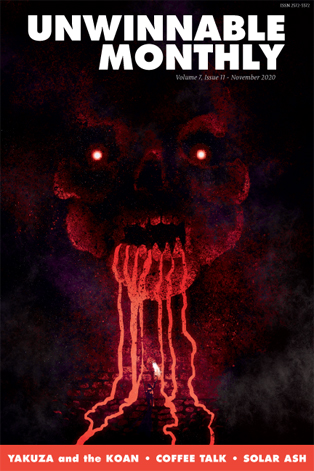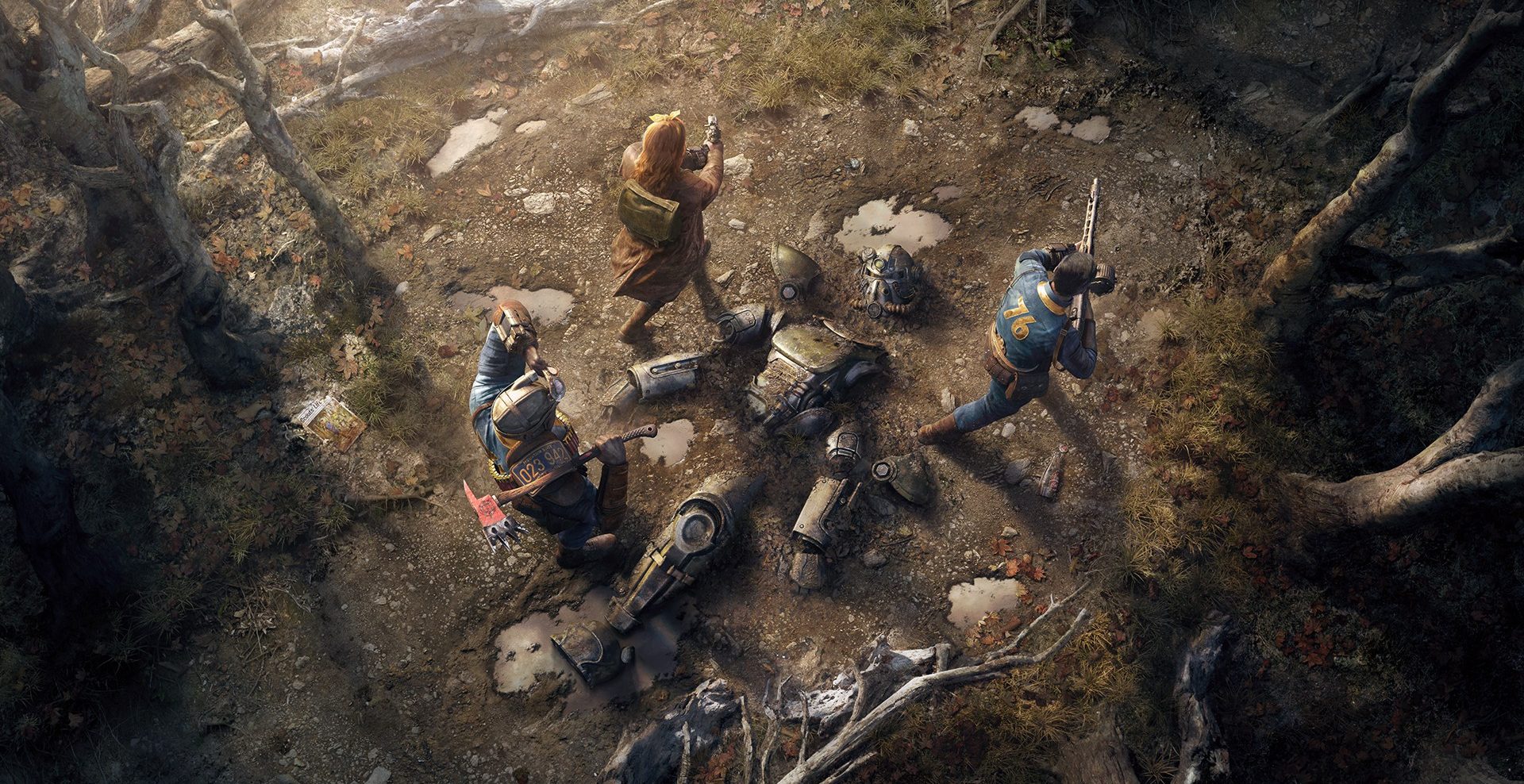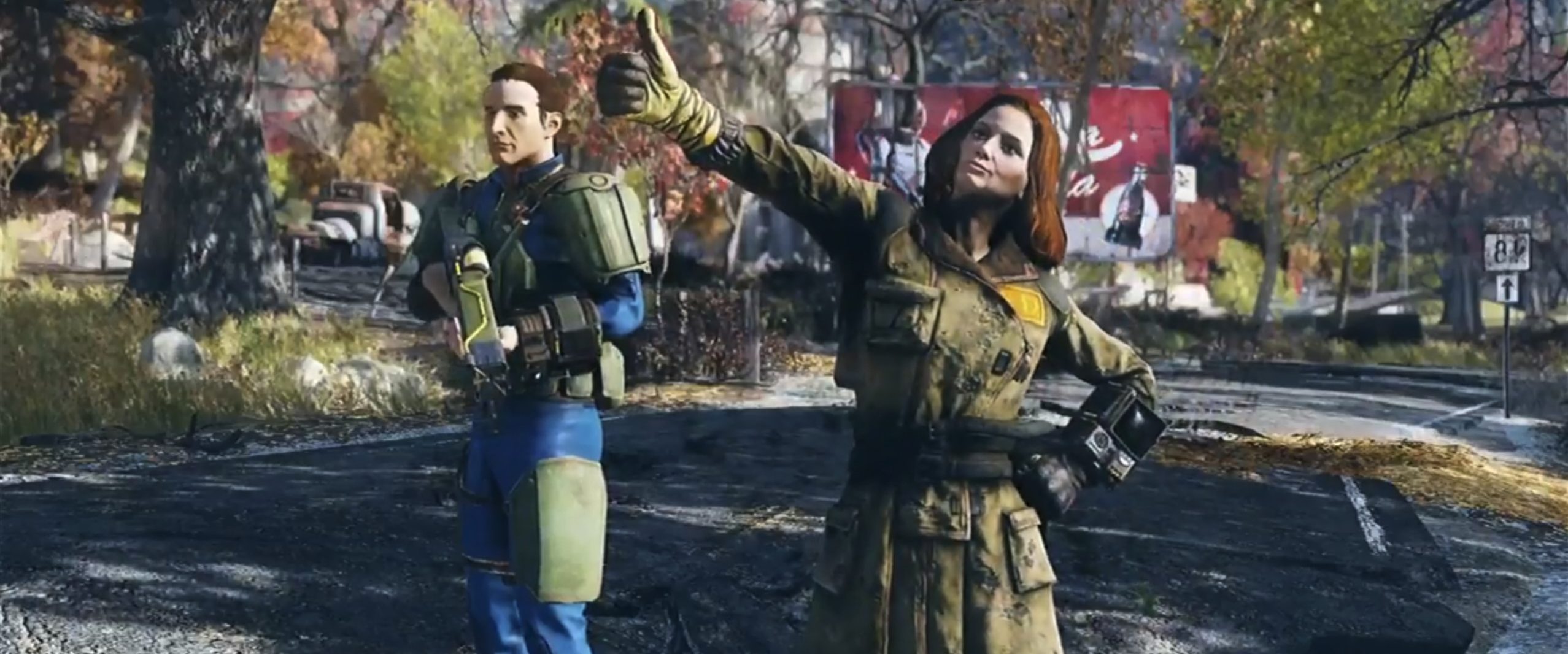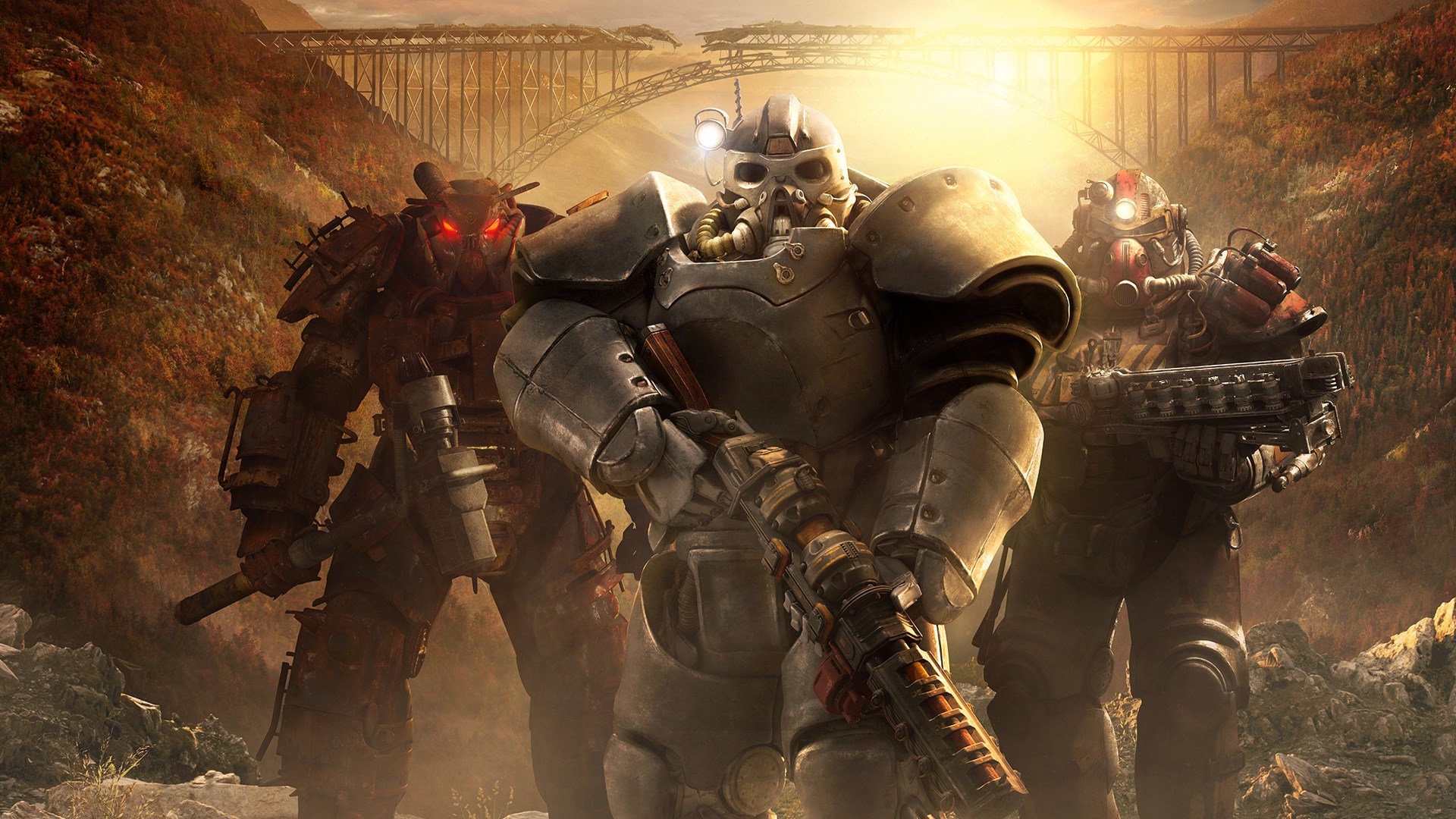
Crowded Apocalypse
 This column is a reprint from Unwinnable Monthly #133. If you like what you see, grab the magazine for less than ten dollars, or subscribe and get all future magazines for half price.
This column is a reprint from Unwinnable Monthly #133. If you like what you see, grab the magazine for less than ten dollars, or subscribe and get all future magazines for half price.
———
Finding deeper meaning beneath the virtual surface.
———
For anyone who’s played one of the first-person Fallout games, the series’ latest installment (released, admittedly, in 2018), Fallout 76, feels immediately familiar, like riding a rusted, irradiated old bike. As in past games, you start 76 in your very own vault, where you can customize your character and briefly explore your cramped surroundings before cracking open the vault door and making your way outside into the mysterious wasteland stretching beyond. Here, though, 76 begins to differ. It doesn’t take long after emerging from the vault’s yawning entrance to stumble on random groups of high-level players stomping around the landscape in their bulky power armor, casually flicking away ghouls and raiders without so much as pausing in their stride.
Gone is the quiet, wide-open emptiness of Fallouts prior. Gone is the sensation of being one of the last few remaining survivors of an existentially disastrous event. No longer are you acting out the fantasy of the settler, the lone pioneer. At least in Fallout 76’s multiplayer “Adventure” mode, you are just the newest transplant to an already established and, by this point, crowded and gentrified neighborhood. Here, you rub shoulders with players in goofy costumes throwing up strange emotes and dance moves; here, you stumble on a player tracing the same mission steps as you and awkwardly attempting to use the same computer consoles to flip the same door switches, figuring out where exactly chivalry applies in a post-apocalyptic setting.

Deep dives into terminal lore-dumps (otherwise a Fallout staple) are interrupted by incoming nuke warnings, as nearby players fling their nuclear footballs wantonly around on inscrutable end game quests. Minutes spent setting up perfect ambushes for passing groups of enemy mobs are wasted as some anonymous level 200 player sprints through dropping grenades and mines and obliterating all in her wake. Far from a solitary, methodical grind, 76 is loud and messy; so full of so many things, everywhere.
Player camps dot 76’s sprawling map. Some are indistinguishable from the game’s built-in assortment of dilapidated architecture. A segment of players choose to outfit their cute little single-bedroom bungalows with matching furniture, arranging the chairs, benches and cabinets with care. Others erect monuments to their own avarice and seemingly endless free time and dedication. Once, walking between towns, I stumbled upon a massive church, with tall, white wood walls, and gun turrets placed atop its steeples. Inside, at the pulpit, a player dressed like the grim reaper played a theremin without looking up when I entered. His AI companion marched up, like one of J.F. Sebastian’s dolls in Blade Runner, warning me to watch my step on her master’s property. It was a little universe in a big one, or rather, a much larger universe, in an otherwise small one.

Far from incentivising me to play more of the game, in order to reach these runaway levels of stature and virtual success, seeing the grandiose accomplishments on display by high-level players feels intimidating and deflating. It recalls the emotional state of sitting at the bottom of Manhattan on the northbound I.R.T. subway line, knowing your stop is somewhere up in the two-hundreds. Sure, eventually, you’d get there, but the length of the journey is enough to make you feel exhausted before you’ve even begun.
In spite of their in-crowd status, Fallout 76’s elite group of longtime players are not as overtly aggressive or threatening as the prodigal sons and daughters of other multiplayer online franchises. You don’t spend the introductory hours of the 76 getting ganked or harassed by bored teens with over-powered rifles that took hundreds of hours to earn. Instead, 76’s end-game players mostly seem content to leave the noobs alone to take their tentative first steps into the wasteland unbothered.
A notable exception to this even handed behavior happened when Bethesda released a new paid tier to the game called Fallout 1st. For $12.99 a month players gained access to otherwise unavailable outfits, skins and furniture items in the game’s world, along with the ability to create private servers where only they and their friends could play. Because this new gilded class could now walk around rocking unique emotes and limited-edition threads it was only a matter of time before their flashy lifestyles began attracting unwanted attention from disgruntled players. On reddit, posts were soon published by unlucky Fallout 1st players who’d been set upon by groups wearing bear costumes. Others were shot at, sometimes even nuked.

These vigilantes may have been acting out of pure resentment but they were also unintentionally reinforcing the core thematic approach of a game like 76. One’s first few steps into a wasteland as active and crowded as 76’s should feel a bit overwhelming. Blasting out the vault gate with power armor keys in hand and heaps of bottle caps in the bank account means missing the experience of feeling small, meaningless and insignificant. It means missing the chance to skim along the surface of a deep and well-lived-in world, instead floating along as the unquestioned nucleus of a bunch of pre-loaded systems and events, the stiff and unremarkable norm of most games, previous Fallouts included.
The nominal Fallout experience, after all, has always been a singular one. The classic approach has always meant getting to be the lone wanderer, all alone with your loot piles and questlines. Seeing that experience casually replicated, with random parts and pieces swapped out for variety, with new outfits and customized faces grafted roughly on top, changes things irrevocably. Misguided bandaids like Fallout 1st are there to tamper some of the disappointment of being made to feel less special, in a world full of bigger and better “You”s.
As impure as this new overcrowded future may be, as tonally messy and physically strange, it’s also compelling in ways that Fallout has often failed to be of late. Wrapped in the familiar dirt and rust-colored aesthetics are new shining motes of creative individuality; showcasing new talent and personality, not merely total hours invested or extra money spent. Shortcuts miss the point, there’s no ultimate ending to rush to in this semi-alive world. We already bombed ourselves (and continue to do so), there’s nothing vital to save. Instead, there’s the shockingly beautiful autumnal valleys of West Virginia to traipse about, full of buggy hard-coded villains and big himbo energy power armored bros, there to squash the nasty bugs in your path and build strange monuments for you to explore. A vibrant wasteland, a sparkling new way to experience a dull old formula.
———
Yussef Cole is a writer and visual artist from the Bronx, NY. His specialty is graphic design for television but he also enjoys thinking and writing about games.




